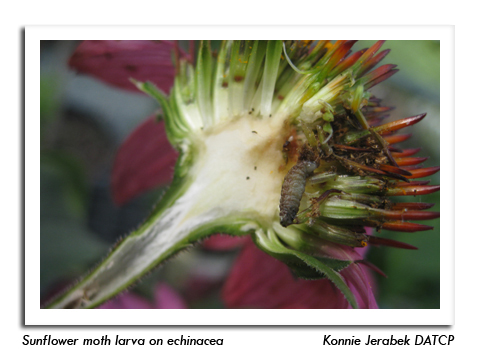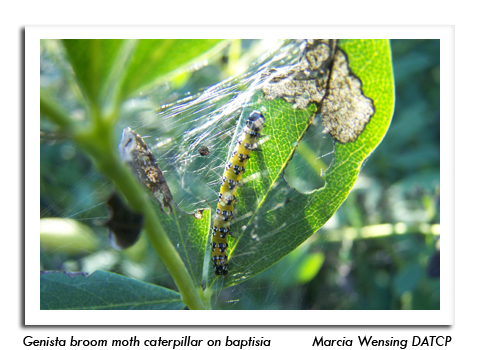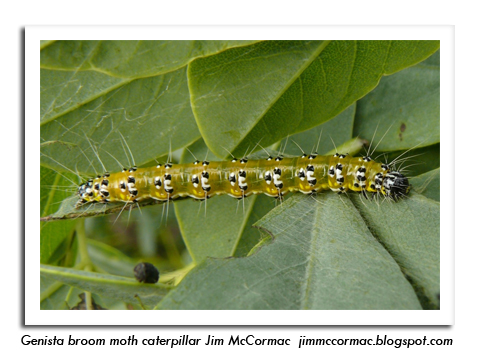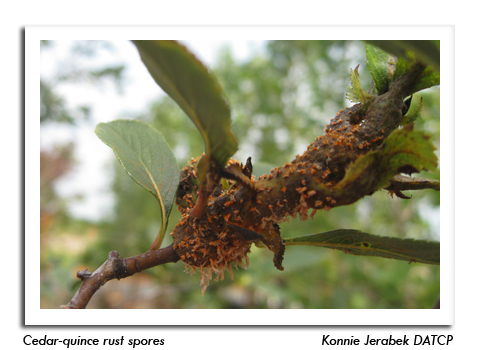
 |
|
|
Nursery & Forest
Volume 57 Number 17 Date 08/09/2012 SUNFLOWER MOTH - This destructive, migratory sunflower pest was reported by a DATCP nursery inspector on Echinacea 'Magnus' and 'Purpurea' in Pepin, St. Croix and Vernon counties. The larvae initially feed on the florets and later burrow into individual seeds, creating ideal entry sites for the Rhizopus head rot fungus. An indicator of infestation is the presence of tangled mats of webbing on the flower surface. Control consists of an insecticide application made shortly after the flowers open, with subsequent treatments as needed. Removal of infested flower heads is also advised. GENISTA BROOM MOTH CATERPILLAR - Larvae of this typically southern species have been defoliating baptisia (false indigo) across Wisconsin this summer. Reports of damage were received from Columbia, Dane, Dunn and Iowa counties last month and inspectors noted the caterpillars in Racine, Vernon and Waukesha counties earlier in the week. Outbreaks are apparently occurring in several other Midwestern and Eastern states. The distinctive green or orange larvae, with rows of clustered white hairs surrounded by black bands, are voracious feeders that warrant control. Small infestations should be removed by hand, while larger infestations may require the use of Bt, (Bacillus thuringiensis). Another option is to cut the baptisia back to a few inches, properly disposing of the cuttings and caterpillars. CEDAR-HAWTHORN AND CEDAR-QUINCE RUST - Symptoms of cedar-hawthorn and cedar-quince rust are appearing on hawthorns throughout the state. In the case of cedar-hawthorn rust, bright orange leaf spots are evident on the leaves, while cedar-quince rust is infecting the fruits and twigs. Both rust diseases require two hosts to complete their life cycles, a rosaceous host such as hawthorn and a juniper host. Selecting resistant hawthorn cultivars and thorough sanitation (removing as much of the infected twigs, fruit and leaves as possible) are the recommended controls. Fungicide treatments applied as new growth appears and flower buds start to open may be justified for severe cases. Control on the juniper host is usually not necessary. --Liz Meils, DATCP Nursery Inspector GYPSY MOTH - The state moth count is now 99,284 based on examination of 73% of the 19,000 total traps set in 50 counties. Moth flight has ended in areas south of Highway 29, and is tapering off in areas north of Highway 70. Removal of gypsy moth traps has begun in southern Wisconsin. --Nkauj Vang, DATCP Gypsy Moth Program 




|
|
|